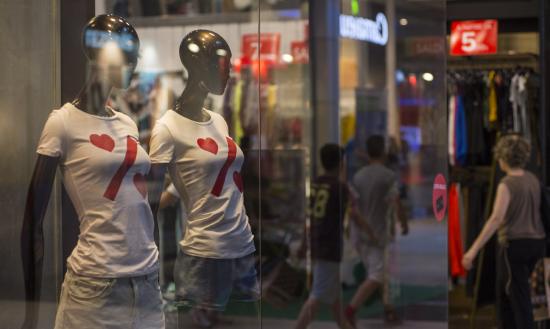One-off impact of the spring lockdown on IGD’s results
The business model confirms its validity even with the limits imposed by social distancing

- Retailers’ sales in September recover almost all of the pre-Covid level, with footfalls increasing gradually and the average ticket higher.
- Despite the challenging conditions, Financial Occupancy in Italy remained high, testimony to the resilience of IGD’s shopping center model.
- The financial-economic performance reflects the underlying holding capacity of operations, despite the one-off impact of the drop in rental income and the increase in costs stemming from the pandemic’s spring spike when the lockdown was imposed.
- Despite the encouraging recovery in operations and the financial performance at the end of September, IGD prefers to maintain a cautious stance in light of the recent surge in contagion and is confirming the 2020 FFO guidance disclosed on 6 August 2020, which is expected to be 25-28% lower than in 2019.
The results for the first nine months of 2020 reflect the impact of the health crisis triggered by the spread of Covid-19 and the restrictions adopted by the authorities to contain it. The restrictions, which affected both supply and demand, were eased beginning in May which created room for a gradual recovery in retail activities. In September 2020 IGD was able to recover 87% of the footfalls recorded in September 2019 and almost all of the retailers’ sales (97%). The customers adapted their consumer habits to the needs dictated by the virus, reducing visits to shopping centers slightly, but increasing the amount of the average ticket (+14.1% vs September 2019).
Another comforting result comes from Financial Occupancy which came to 95.7% in Italy (+0.1% compared to 30 June), attributable also to the opening of new stores: testimony to the validity of the shopping center format even in this new environment. In Romania, where the Financial Occupancy was 93.8%, all the tenant negotiations relative to the lockdown period have already been completed. In Italy the negotiations are at an advanced stage as more than 90% of them have been finalized. This process did not result in substantial changes being made to existing leases, as tenants were generally granted deferrals or temporary discounts on rent which amounted to €1.1 million in Romania and approximately €7 million in Italy.
In the face of lower rental income and higher costs linked to Covid-19, including higher condominium fees, net rental income came to €89.7 million in the first nine months of 2020, 12.2% lower than in the same period of 2019.
Core business EBITDA amounted to €82.8 million (-12.3%). The core business EBITDA margin was 72.8% with the freehold component (relative to freehold properties) at 73.6%.
Financial charges came to €27.0 million; 6.0% lower than in the first nine months of 2019 net of the accounting impact of the last bond issue completed in November 2019 and excluding the negative carry linked to the refinancing of future maturities.
Funds from Operations (FFO) amounted to €53.4 million, 15% lower than in the same period of 2019; this change includes the one-off provisions made for Covid-19.
To date IGD has available liquidity of around €123 million, as well as a €36.3 million loan guaranteed by SACE disbursed by Banca MPS and a total of €210 million in committed and uncommitted credit lines. The IGD Group, therefore, already has more than enough resources to cover the financial needs for all of 2021.
IGD’s loan-to-value (LTV) was 49.3% at 30 September 2020 (47.9% ex IFRS16), while the interest cover ratio (ICR) came to 3.6X.
Despite the encouraging results recorded in this last quarter, in light of the recent surge in contagion and the implementation of restrictive measures by the government and a few regions, IGD deemed it opportune to confirm the FFO 2020 guidance disclosed on 6 August: it is the expected that the FFO per share for 2020 will be in a range of between €0.54 and €0.57, a drop of between 25 and 28% against 2019.
| Net rental income | € 89.7 mn | -12.2% |
| Core business EBITDA | € 82.8 mn | -12.3% |
| Core business EBITDA margin |
72.8% | -5.8 percentage points |
| Funds From Operations (FFO) | € 53.4 mn | -15.0% |
| Loan-to-Value | 49.3% (adj. IFRS16 about 47.9%) |




